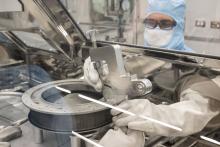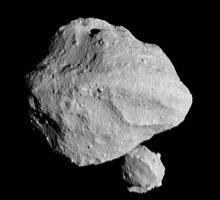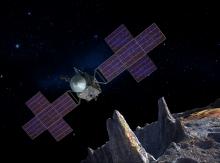Listen to today's episode of StarDate on the web the same day it airs in high-quality streaming audio without any extra ads or announcements. Choose a $8 one-month pass, or listen every day for a year for just $30.
You are here
Asteroid Ryugu
Bits of an asteroid appear to confirm what astronomers could see through their telescopes: it’s dark, it’s rich in carbon, and it’s a relic from the early solar system.
A Japanese spacecraft, Hyabusa 2, collected the samples in 2019. It made contact with the asteroid Ryugu, knocking tiny grains off the surface. The craft caught about five grams of that material, which it dropped off at Earth in 2020.
Scientists won’t start taking a thorough look at the samples until this summer. But they’ve done some early analysis, which revealed that the samples match observations of the asteroid made from Earth.
That’s important for several reasons.
Scientifically, asteroids like Ryugu probably are leftovers from the birth of the planets. So studying them tells us more about conditions in the early solar system. In addition, such asteroids could have brought much of the water that fills Earth’s oceans, and some of the chemical compounds necessary for life. So verifying that what astronomers see through the telescope is correct can help us learn about the birth and evolution of our own planet.
On a more practical level, we might someday find an asteroid on a collision course with Earth. Deflecting the asteroid would require a good knowledge of its composition and structure. So learning everything we can from samples of individual asteroids refines the models of all of them — perhaps helping to keep Earth safe from future threats.
Script by Damond Benningfield





